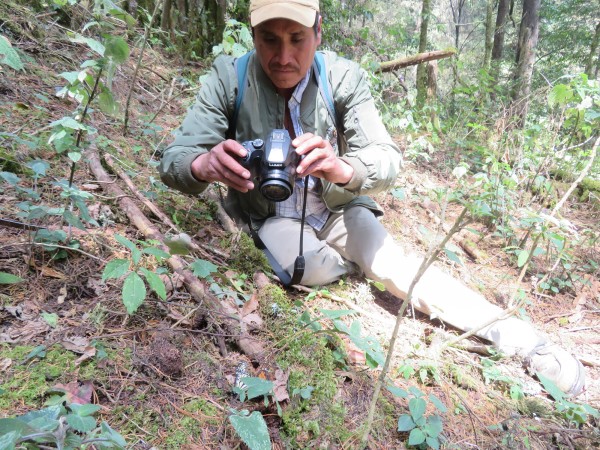News from Cerro Pelon
The Beginning of an Early Departure
March 6, 2018 by Ellen Sharp
Millions of monarchs are now en route to northern Mexico and Texas. After they were pelted with unseasonable rain on the afternoon of February 28, temperatures hit a midday high in the low 60s F up on the mountain. The rangers and arborists watching them thought that the butterflies were confused by these cues: on March 1 and 2, many began to depart.
By March 2, dense clusters had become light smatterings of monarchs dusting the trees. They filled the air more than they filled the trees. We saw them nectaring. We saw them mating. We saw them flying. Possibly flying away entirely.
By Saturday, March 3rd, the clusters in the trees looked denser than the day before. More monarchs had arrived. Had they been hiding out elsewhere on Cerro Pelon? Not likely—the Butterflies and Their People arborists scoured their usual haunts in search of them in the 2nd. Down in the valley I listened in on their walkie talkie talk with a heavy heart. “No las encuentro.” They’re not here. Which led us to suspect that these Saturday arrivals were coming in from Piedra Herrada, the sanctuary to the south of us. Grey skies and cooler temperatures rolled in and halted the exodus for the time being.
The roost that guides had been leading tourists to see, off of La Costera, became less spectacular. The monarchs moved to trees out of view to visitors, higher up in the canopy. Others recolonized higher ground, the top of the path that opens out onto El Llano de Tres Gobernadores. An easy trip up the mountain to see the butterflies became a more challenging one again.
I’ve been on a tear about the myth of “peak butterfly season.” Part of it is I hate saying no. I turn away dozens of would-be guests for our B&B and ecotourism business in late February and the first half of March. I’m already getting reservations for these dates in 2019. Meanwhile, we have plenty of space in November, December and January, when the monarchs are just as likely to take to the air. Any chance I get, I’ll tell you that climate change changes any and all expectations about normal weather and therefore normal monarch behavior.
But I’m pretty unhappy to have the end of the 2017-18 season prove my point about how antiquated the “peak” season concept is. I assumed the colonies would stay with us until March 15: any monarch watcher here can tell you that’s when they’ve typically begun their departure for as long as anyone can remember. This date coincides with the emergence of spring flowers and milkweed in their flyway north. Now I’m worried that there may not be many monarchs left to see by that date, and about what food sources await them they begin an unprecedently early re-migration.
According to the recently announced census, Cerro Pelón now has the largest slice of the pie when it comes to the overwintering population at 30%. Interestingly, more than half of the colonies counted were in a spot not open to the public. The same was true of all of second-ranked roost Las Palomas. Maybe the monarchs are figuring out how to avoid the large crowds that descend upon the more accessible sanctuaries on the weekends.
Ellen Sharp
Co-owner, JM Butterfly B&B

